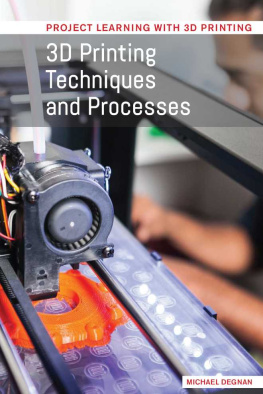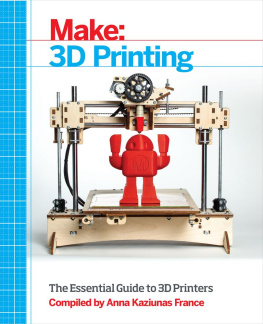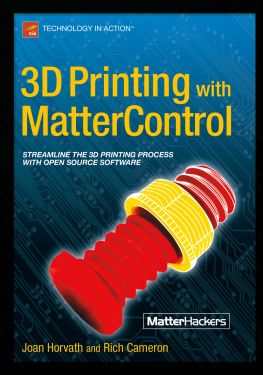Published in 2018 by Cavendish Square Publishing, LLC
243 5th Avenue, Suite 136, New York, NY 10016
Copyright 2018 by Cavendish Square Publishing, LLC
First Edition
No part of this publication may be reproduced, stored in a retrieval system, or transmitted in any form or by any means-electronic, mechanical, photocopying, recording, or otherwise-without the prior permission of the copyright owner. Request for permission should be addressed to Permissions, Cavendish Square Publishing, 243 5th Avenue, Suite 136, New York, NY 10016. Tel (877) 980-4450; fax (877) 980-4454.
Website: cavendishsq.com
This publication represents the opinions and views of the author based on his or her personal experience, knowledge, and research. The information in this book serves as a general guide only. The author and publisher have used their best efforts in preparing this book and disclaim liability rising directly or indirectly from the use and application of this book.
All websites were available and accurate when this book was sent to press.
Library of Congress Cataloging-in-Publication Data
Names: Degnan, Michael.
Title: 3D printing techniques and processes / Michael Degnan. Description: New York : Cavendish Square Publishing, 2018. | Series: Project learning with 3D printing | Includes bibliographical references and index. Identifiers: ISBN 9781502634245 (pbk.) |ISBN 9781502631503 (library bound) | ISBN 9781502631510 (ebook)
Subjects: LCSH: Three-dimensional printing--Juvenile literature.
| Technological innovations--Juvenile literature. Classification: LCC TS171.95 D44 2018 | DDC 621.9/88--dc23
Editorial Director: David McNamara Editor: Fletcher Doyle Copy Editor: Nathan Heidelberger Associate Art Director: Amy Greenan Designer: Alan Sliwinski Production Coordinator: Karol Szymczuk Photo Research: J8 Media
The photographs in this book are used by permission and through the courtesy of: Photo credits: Cover Jasmin Brutus/Alamy Stock Photo; Back cover Jonathan Juursema/Wikimedia Commons/File:Felix 3D Printer - Printing Head.JPG/CC BY SA 3.0; p. 4 Insanet/Shutterstock. com; p. 8 Joe Gough/Shutterstock.com; p. 11 Coneyl Jay/Stone/Getty Images; p. 14 Zhudifeng/ iStockphoto.com; p. 20 Business Wire/Getty Images; p. 24 Courtesy Stratasys; p. 26 Moreno Soppelsa/Shutterstock.com; p. 33 William M. Plate Jr., U. S. Air Force/Wikimedia Commons/ File:GMAW.welding.af.ncs.jpg/Public Domain; p. 35 Encyclopedia Britannica/UIG/Alamy Stock Photo; p. 44 Otnaydur/Shutterstock.com; p. 51 BaMic/Shutterstock.com; p. 52 Sspopov/ Shutterstock.com; p. 65 Arleksey/Shutterstock.com; p. 68 Ron Ellis/Shutterstock.com; p. 73 Ahmad Al-Rubaye/AFP/Getty Images; p. 81 Michael Degnan; p. 84 Yoon S. Byun/The Boston Globe/Getty Images; p. 88 Erik Tham/Corbis/Getty Images; p. 91 Larry Busacca/ Getty Images; p. 94 Rebecca Hale/National Geographic/Getty Images; p. 97 AP Images; p. 99 John B. Carnett/Popular Science/Getty Images; p. 108 Chip Somodevilla/Getty Images.
Printed in the United States of America
CONTENTS
Opposite: An ink-jet printer head moves across the page from left to right, creating words and images as it goes. This action will be used throughout this book to explain how 3D printers work.
TECHNICAL TERMS
gateway technology A technology that opens the door for the development of other often complementary technologies .
STEAM An acronym for "science, technology, engineering, art and design, and math . STEAM advocates argue for the development of creative skills that will act as a driver for innovation .
STEM An acronym for "science, technology, engineering, and math, which are subjects of increased importance for living in the information age .
T HERE ARE MANY TRADITIONS OF AMERICAN HERITAGE THAT define us to the rest of the world. These include hard work, a cooperative citizenry that holds individual freedom of expression dear, and the dream of the frontier with its promise of opportunity. These traditions represent our values of industry, liberty, and intellectual self-improvement that were the philosophical foundations of our republic.
The summation of these values can be seen in another American tradition, that of inventor as hero. To innovate is to challenge, to deny the tyranny of current assumptions about what is possible. To invent is to re-create, to renew, and, in doing so, empower.
Consider the face of the $100 bill, Benjamin Franklin. One of the architects of the Declaration of Independence and the United States Constitution, Franklin was also a diplomat, businessman, scientist, and inventor. Invention is in the DNA of our national worldview, and we recognize that ideas and the human imagination are our most powerful tools.
More than thirty years ago, an American named Charles Hull imagined a what-if scenario: what if science fiction could be made reality, so that not just words on stacks of paper, but complex physical 3D objects could be printed? If you had an ink-jet printer that moved the print head across the width of the page while moving top to bottom down the length of a page, why not make something that could also move up and down to print something with height? This would create threedimensional objects, things you can hold in your hand, and without the challenge of waiting for them to be hand assembled. Books have been printed for centuries; why not the same with sneakers, showerheads, and even airplanes? Hull was imagining a next step-a revolution, in fact-in the way the world makes and manufactures.
Today, you can 3D print , and when an individual or organization wants to test out a new concept or invention, they can now fabricate it in a matter of hours, versus weeks. With just one question, Why not try to print objects? the resulting research produced new types of manufacturing that have been and continue to be revolutionized by 3D technologies. The author of this book has held in his hands 3D printed art sculptures, customized artificial skull implants, and titanium parts for jets. 3D technology now assists in a wide range of fields, including art, scientific research, medicine, aerospace, military technology, innovation, and entertainment.
How can one group of technologies affect so many areas of our lives? This is because 3D manufacturing is a gateway technology , or a type of technology that allows the introduction of other new technologies to our world as a result of its use. Another powerful gateway technology that affected our world is fire. In learning to control fire, humans were later able to develop cooking, home heating, and the fabrication of other technologies, such as iron and steel. Consider the Manhattan skyline: without the domestication of fire, skyscrapers could not exist, for there would be no steel.
The powerful technologies of 3D manufacturing did not emerge overnight. Intensive research in the areas of computer hardware, computer software, and manufacturing machine development was necessary to refine the quality and resolution of the objects produced by the machines. A comparison can be made to television: over the course of the twentieth and early twenty-first centuries, television displays became increasingly clear and versatile in size. Starting from small and blurry glass screens animated by neon and cathode -ray tubes, television sets now boast image resolution that rivals nature and sizes to dominate a living room.

















